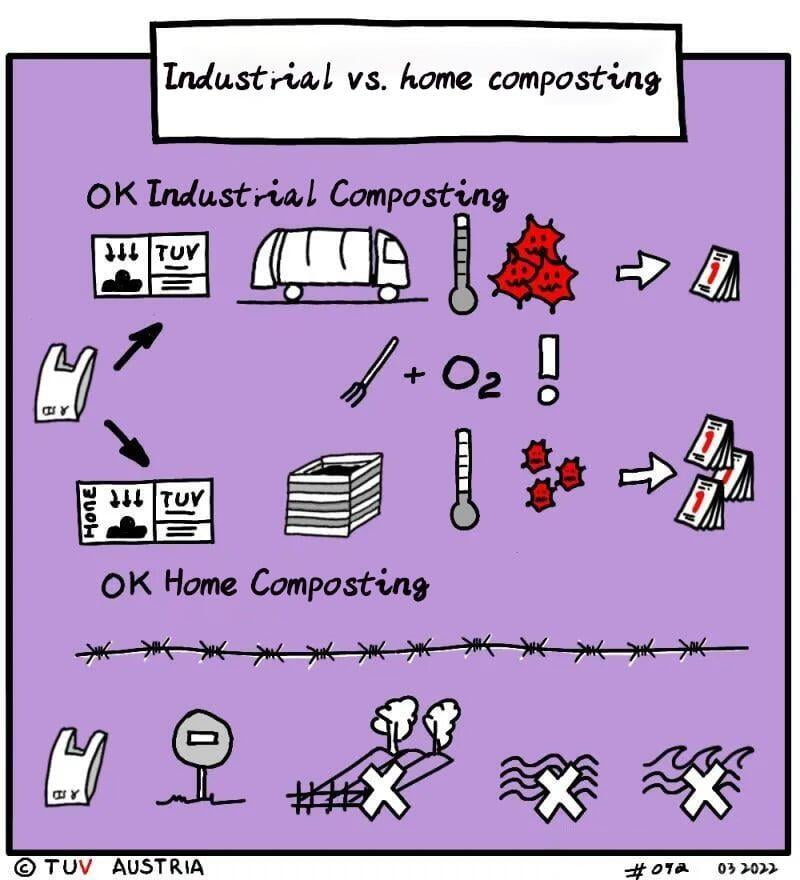Industrial and home composting
Industrial and home composting is based on the same principle, i.e. the final breakdown of compostable materials into carbon dioxide, water and biomass by microorganisms. The difference between the two is the significant difference in the composting environment.
Industrial composting is carried out in specific facilities and environments capable of handling large quantities of organic waste, at high composting temperatures (around 58°C), and under conditions designed to meet the requirements of a relatively short period of time (6 months) to complete the composting process and meet certain standards. It can be said that this environment is the most active living environment for thermophilic microflora.

On the other hand, for home composting, the frequency of new organic waste is not high, and the composting process is achieved mainly through mesophilic microorganisms, the temperature is generally ambient, and the time to complete composting is longer than for industrial composting.
For both of these forms, whether industrial or home composting, the availability of oxygen in the process is crucial, otherwise the composting process will slow down to a great extent or even anaerobic depletion will occur, in which case methane gas (often accompanied by an unpleasant odor) will be produced instead of carbon dioxide gas.
To avoid anaerobic depletion, it is necessary to turn the composted soil regularly and not to confuse the home compost with other organic waste discarded in the garden.
It is important to note that regardless of the type of compostable material, even if it meets the requirements for home composting at lower temperatures, it does not follow that the material will degrade in natural environments such as soil, freshwater or seawater.
Therefore, the act of throwing waste into the environment should be avoided in all cases.

